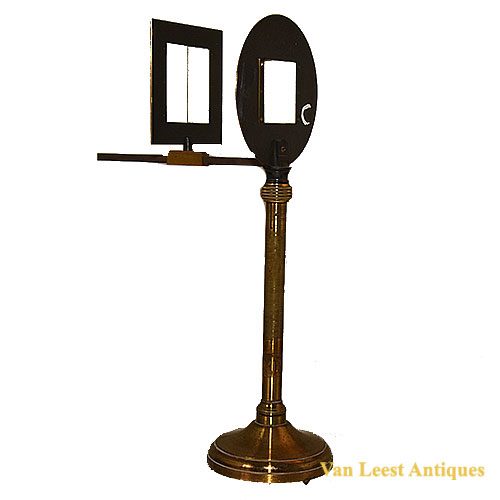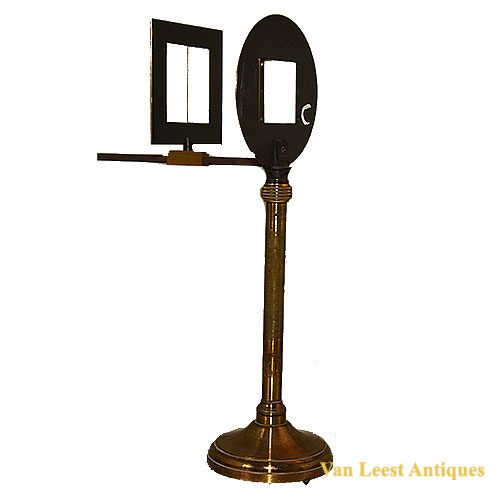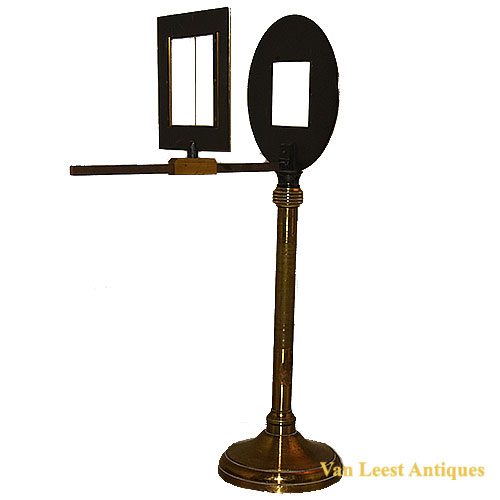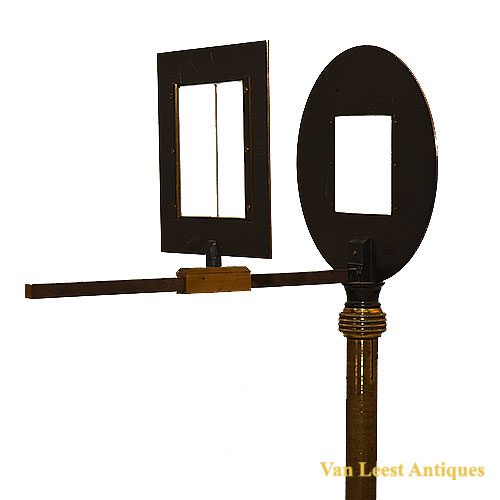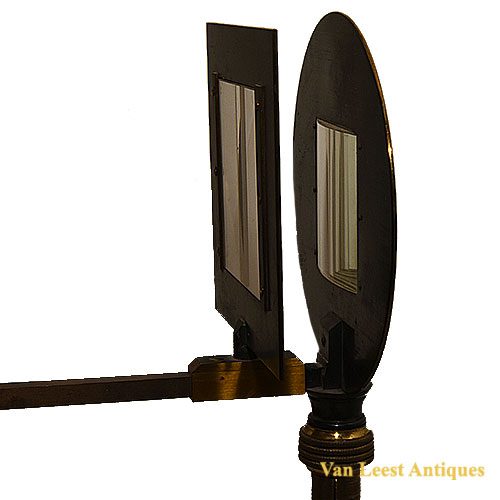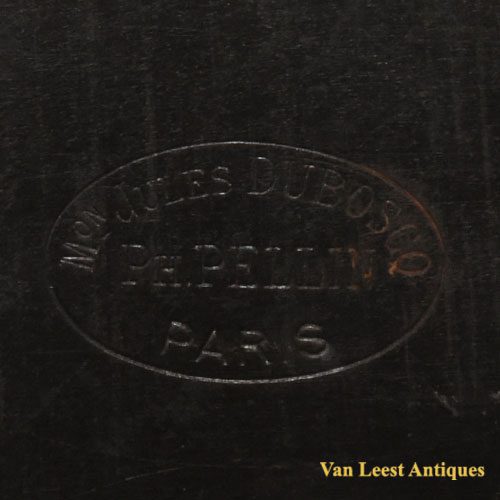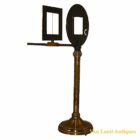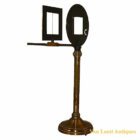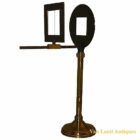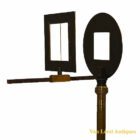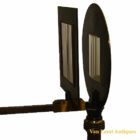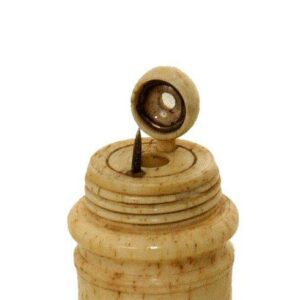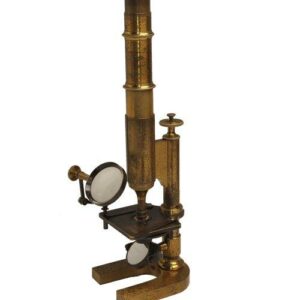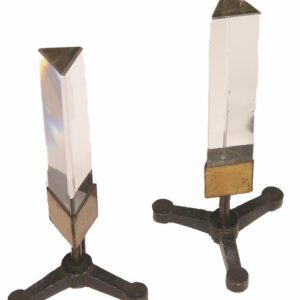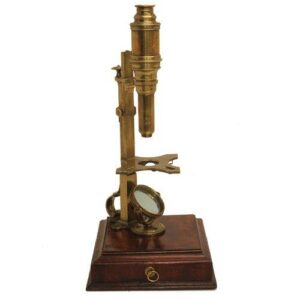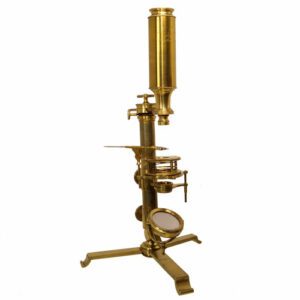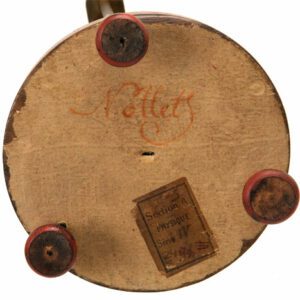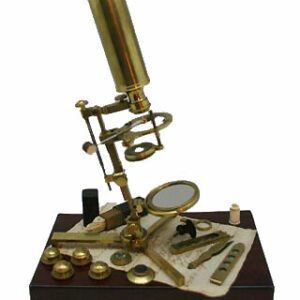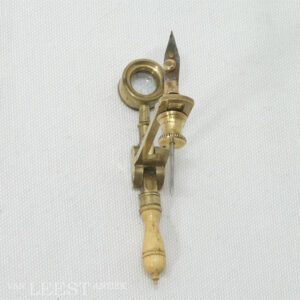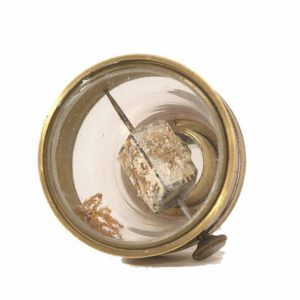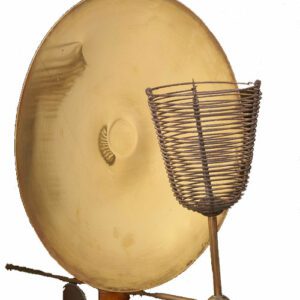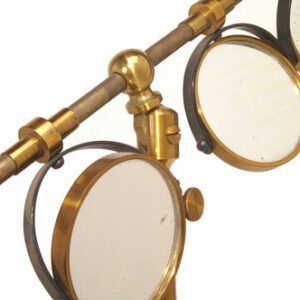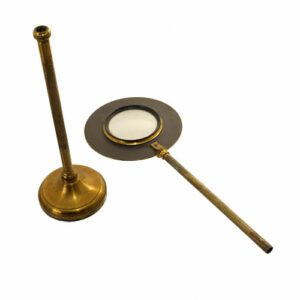Duboscq device for the production of complementary colours
On application
This devices By Jules Duboscq and Ph. Pellin was te be used with a prism and accesoires. The prism’s spectrum was shone on the cylindrical lens in the circular screen. This lens would couverge the colours of the spectrum into a single white streak of light, had it not been for the vertical glass wedge on the horizontale arm. This wedge was in the path of part of the spectrum and it would slightly alter the direction of the rays passing through it. The light of two fractions of the spectrum would therefore be gathered into two separate streaks of light. And, in consequence, the colours of these streaks would be complementary. The glass wedge is glued to a glass plate that can be shifted sideways. The fraction of the spectrum that would pass the wedge could be varied and so the colours of the streaks could be changed.
The experiment was devised by Jules Duboscq, see the signe on the screen, in the 1850-1860. Ph. Pellin was the retailer. Length without telescope mechanism 38 cm.
